Last night I played in the first round of the June Saturday Knight Live Marathon at Bay Area Chess. Compared to most tournaments, I would describe this one as… intimate. There were only twelve players on six boards, split into two sections. If you do the math, you realize that this tournament is basically going to be a round robin. (Salman Azhar, the TD, does allow walk-ins, so it’s possible that the players will change to some extent from week to week.)
My game against Arhant Katare was decided right in the opening. I played a side line in the Scotch Opening and it was clear that my young opponent only knew the main line.
FEN: r3kb1r/p1ppqppp/b1p5/3nP3/2P5/1P6/P3QPPP/RNB1KB1R b KQkq – 0 9
This position arises after 1. e4 e5 2. Nf3 Nc6 3. d4 ed 4. Nxd4 Nf6 5. Nxc6 bc 6. e5 Qe7 7. Qe2 Nd5 8. c4 Ba6 9. b3. Garry Kasparov revived this line against Anatoly Karpov in their fifth world championship match, in 1990. In that game Karpov played 8. … Nb6 and lost in 102 moves. A year later, in Tilburg, Karpov played 8. … Ba6 9. b3 g6 and lost again.
The “book” moves here are Karpov’s 9. … g6, the obvious 9. … O-O-O, and the wild 9. … Qh4, which I don’t really know anything about. A few years ago I was analyzing the position with Fritz, after I had lost a very discouraging game against Michael Aigner, and it suggested 9. … f6. A very reasonable move that has for some reason been almost completely ignored by theory — my favorite kind of move! I’ve been playing it in this position ever since.
Katare continued in normal fashion with 10. Bb2, and now I played 10. … Nf4!, which is the whole point. Though f4 is by far the best square for the knight, this move has been played only 11 times according to ChessBase — and two of the games were mine!
Katare played 11. ef?!, which falls into a little tactical trap. He is in good company. This was the move played in the stem game for 10. … Nf4, a game between Ljubojevic and Ivkov from 1978. (I did not know about the Ljubo game. As far as I knew, the whole thing was Fritz’s idea.)
FEN: r3kb1r/p1ppqppp/b1p5/3nP3/2P5/1P6/P3QPPP/RNB1KB1R b KQkq – 0 9
If Black takes on e2 or f6 it’s a disaster for him, but fortunately I have a series of zwischenzugs: 11. … Nd3+! 12. Kd2 Qxe2+ 13. Bxe2 Nxb2. The knight is trapped on b2, but he’s like a horse that hasn’t been broken yet. In the process of taming him, White is going to have to lose a couple of “fence posts,” the pawns on c4 and f6. In the stem game, Ljubojevic managed to draw anyway, but fortunately my opponent wasn’t a grandmaster and I was able to convert the extra pawn into a win without too much difficulty.
It was an odd way to win a game, because the computer came up with the most important idea, and all I had to do was mop up afterwards. But a win is a win!
Linnea and Thadeus came with me, and their games were much more interesting, especially Thadeus’. Here was the crucial position. It’s important to note that the time was very uneven: Thadeus was down to about three minutes (with no time delay), while his opponent had more than 30 minutes left.
FEN:4r2b/p3k3/7P/8/1pB1N3/8/PP4n1/1K3R2 b – – 0 1
Thadeus has just moved his rook on e1 to f1, obviously threatening 2. Rf7+. I thought that 1. … Rf8 was forced, and I was trying to figure out whether White is winning after 2. Rxf8 Kxf8. But Thadeus’ opponent shocked me with 1. … Kd8? Well, okay, this does stop Rf7+, but it seems to just loses material after 2. Nd6!, a move Thadeus played with little hesitation. However, Thadeus’ opponent had a trick up his sleeve: 2. … Ne3.
Here all that Thadeus needs to do is play 3. Re1! and the game is over. If 3. … Nxc4 4. Rxe8+ followed by Rxh8 decides. If Black moves his rook away from the e-file, then the knight falls. And finally, if 3. … Re7 the fork 4. Nf7+ wins. This last line is actually a little bit trickier than it looks at first, because Black gets his piece back after 4. … Ke8 5. Nxh8 Nxc4 6. Rxe7+ Kxe7. (Diagram)
FEN: 7N/p3k3/7P/8/1pn5/8/PP6/1K6 w – – 0 6
If it were Black’s move, he would draw with … Kf6. But it’s White’s move, and he gets the last laugh with 7. Ng6+ Kf6 8. h7! winning. Just like my game, it’s all about the tempi!
In fairness to Thadeus, this was a lot to see with only three minutes left on your clock, and so he bailed out into an opposite-color bishop endgame with 3. Nxe8 Nxf1 4. Bxf1 Kxe8. He actually turned down his opponent’s draw offer and played on for a while longer, but after his time got under a minute and he was still not making any progress, he conceded the draw.
On the way back home, Thadeus said, “That’s why I don’t like to play for attacks.” (Earlier in the game he had a strong kingside attack.) I’m not quite sure what his point was. Did he mean that the time he had used trying to figure out how to checkmate his opponent had gotten him in time trouble?
It’s true that Thadeus has traditionally played more placid chess and has not gotten into time trouble. But still, I think that it was his constant pressure on the opponent that got him a winning position in the first place. The only reason he didn’t win it (aside from the clock, perhaps) was that instead of continuing to put pressure on the opponent with 3. Re1, he played the “bail-out” move 3. Nxe8, which was more in his old style. In other words, he missed the win not because of his new, more aggressive style, but because his old style reasserted itself at the wrong moment.
Meanwhile, Linnea won her game, a rook and pawn endgame which her opponent strangely resigned when he saw he was going to lose a pawn. Memo to all players: When you lose a pawn in a rook-and-pawn endgame, that means the fight has just begun!
So we went home either 83 percent happy or 67 percent happy, depending on whether you count Thadeus as half happy or 100 percent sad.
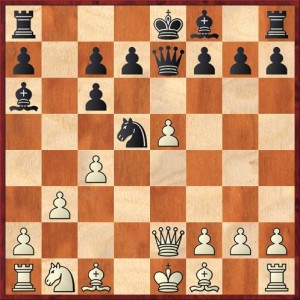
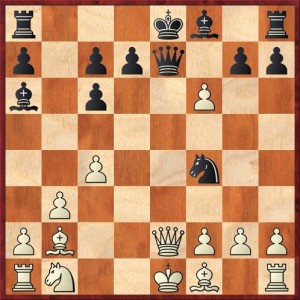
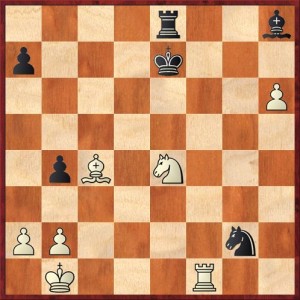
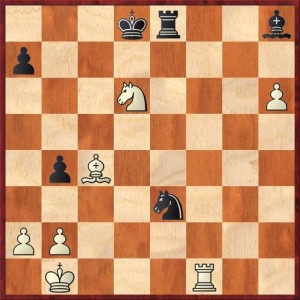
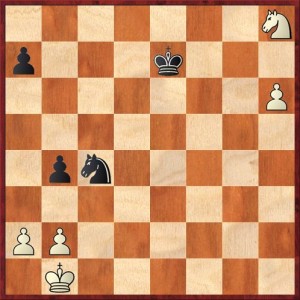



{ 1 comment… read it below or add one }
I had white in that variation of the Scotch in a game against FM Harutyun Akopyan last week at the Memorial Day Classic in Ontario. However, Akopyan played one of the main lines with 8. … Nb6 instead of 8. … Ba6, followed by g6 and Bg7. During the game, I couldn’t remember the line exactly and it turns out that Kasparov played Nd2 before playing b3 (whereas I played b3 first). I ended up letting Akopyan win my e4 pawn at the cost of his queenside pawn structure (he had an isolated a pawn and double, isolated c pawns). I eventually won the pawn back with a neat tactical shot that he missed and wound up drawing the game. My first ever draw against an internationally titled player!
{ 1 trackback }